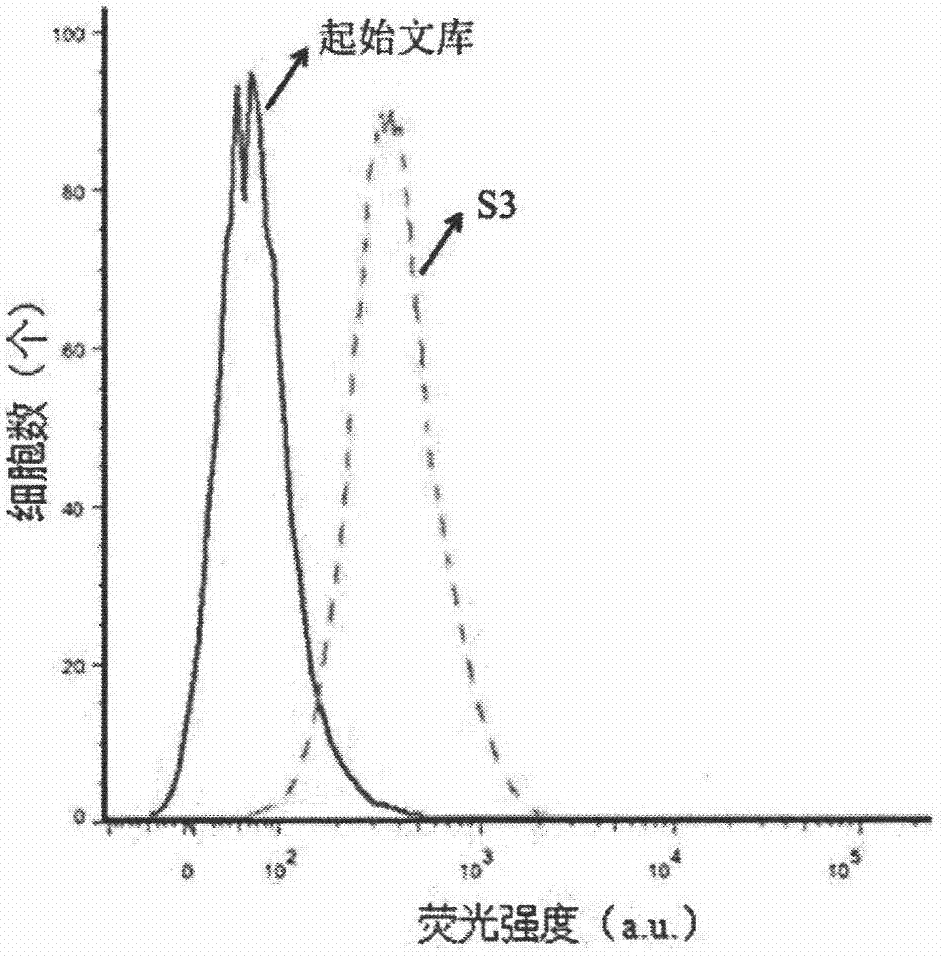Sequence of aptamer used for targeting human nasopharyngeal carcinoma cell and application thereof
A nucleic acid aptamer and cancer cell technology, applied in the field of cell biology, can solve the problems of low sensitivity and specificity, and achieve the effects of small molecular weight, good permeability, easy synthesis and labeling
- Summary
- Abstract
- Description
- Claims
- Application Information
AI Technical Summary
Problems solved by technology
Method used
Image
Examples
Embodiment 2
[0024] Example 2 Detection of dissociation coefficient of sequence S3 on nasopharyngeal carcinoma cell 5-8F by flow cytometry
[0025] The operation of dissociation constant determination is basically the same as that in Example 1. Sequence S3 with different concentrations is arranged in parallel, the fluorescence value of the flow cytometer is used as the ordinate, and the concentration of S3 as the abscissa, Y=Bmax×X / (Kd+X) equation simulates the curve to obtain the dissociation constant of sequence S3. The result is as image 3 As shown, the binding ability of sequence S3 to target cell 5-8F is very strong, and the dissociation constant is 11.9329±1.3997nM.
Embodiment 3
[0026] Example 3 Combination of Detection Sequence S3 and Nasopharyngeal Carcinoma Tissue Section
[0027] The paraffin-embedded nasopharyngeal carcinoma tissue slices were placed in an oven at 60°C for 2 h, and the slices were dewaxed by immersing in xylene twice, 15 min each time; then immersed in absolute ethanol twice, 5 min each time; the slices were sequentially passed through gradient ethanol ( 95%, 90%, 80%, and 70% ethanol once each, 2 min each time), and finally immersed in PBS; the microwave repair method was used to repair the antigen on the slice, and after cooling to room temperature, wash twice with PBS; Block with bovine serum and salmon sperm DNA binding buffer at room temperature for 1 h; remove the blocking solution, add biotin-labeled sequence S3 (200 nM) and incubate at 4°C for 1 h; wash with washing buffer for 3 times, each time for 5 min; then add streptavidin Incubate the quantum dots modified with prime at room temperature for 0.5 h; after washing, cov...
PUM
 Login to View More
Login to View More Abstract
Description
Claims
Application Information
 Login to View More
Login to View More - R&D
- Intellectual Property
- Life Sciences
- Materials
- Tech Scout
- Unparalleled Data Quality
- Higher Quality Content
- 60% Fewer Hallucinations
Browse by: Latest US Patents, China's latest patents, Technical Efficacy Thesaurus, Application Domain, Technology Topic, Popular Technical Reports.
© 2025 PatSnap. All rights reserved.Legal|Privacy policy|Modern Slavery Act Transparency Statement|Sitemap|About US| Contact US: help@patsnap.com



